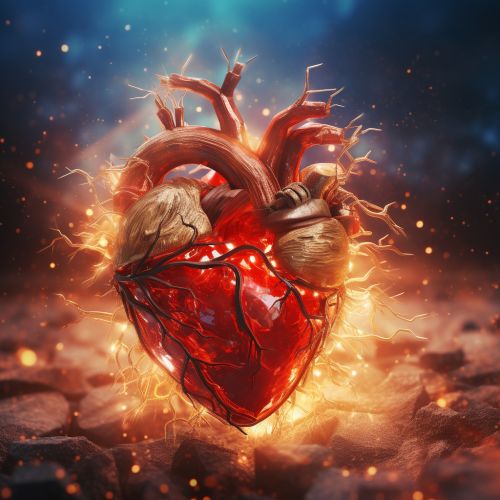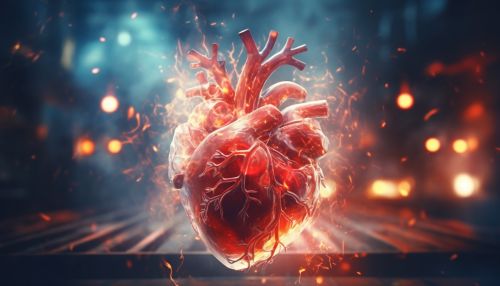Heartbeat
Anatomy of the Heartbeat
The heartbeat is a complex physiological process that involves the coordinated contraction and relaxation of the cardiac muscles in the heart. This process is regulated by the cardiac conduction system, a group of specialized cardiac cells that initiate and propagate the electrical impulses responsible for a heartbeat.


Physiology of the Heartbeat
The heartbeat begins with an electrical impulse generated by the sinoatrial (SA) node, often referred to as the heart's natural pacemaker. This impulse triggers the atria, the upper chambers of the heart, to contract and pump blood into the lower chambers, the ventricles. The electrical impulse then travels to the atrioventricular (AV) node, which acts as a gatekeeper, delaying the signal before it reaches the ventricles. This delay allows the ventricles to fill with blood before they contract.
The electrical impulse then travels along the bundle of His and into the Purkinje fibers, causing the ventricles to contract and pump blood out of the heart. This sequence of events constitutes a single heartbeat.
Heartbeat Regulation
The rate and rhythm of the heartbeat are regulated by both internal and external factors. Internally, the SA node controls the pace of the heartbeat under normal conditions. However, the rate can be influenced by the autonomic nervous system, which can speed up or slow down the heart rate in response to various stimuli such as exercise, stress, or changes in body temperature.
Externally, certain substances can affect the heart rate. For example, caffeine and nicotine can increase the heart rate, while beta blockers and other medications can decrease it.
Abnormal Heartbeats
Abnormal heartbeats, or arrhythmias, can occur when the heart's electrical system malfunctions. This can result in the heart beating too fast (tachycardia), too slow (bradycardia), or irregularly. Arrhythmias can be caused by a variety of factors, including heart disease, stress, certain medications, and genetic predisposition.
Heartbeat Measurement and Monitoring
The heartbeat can be measured and monitored in several ways. The most common method is by taking a person's pulse, which can be felt at various points on the body where an artery is close to the skin. Medical professionals often use a stethoscope to listen to the heartbeat directly.
More advanced methods of monitoring the heartbeat include electrocardiography (ECG or EKG) and echocardiography. An ECG records the electrical activity of the heart, while an echocardiogram uses ultrasound to create images of the heart in motion.
